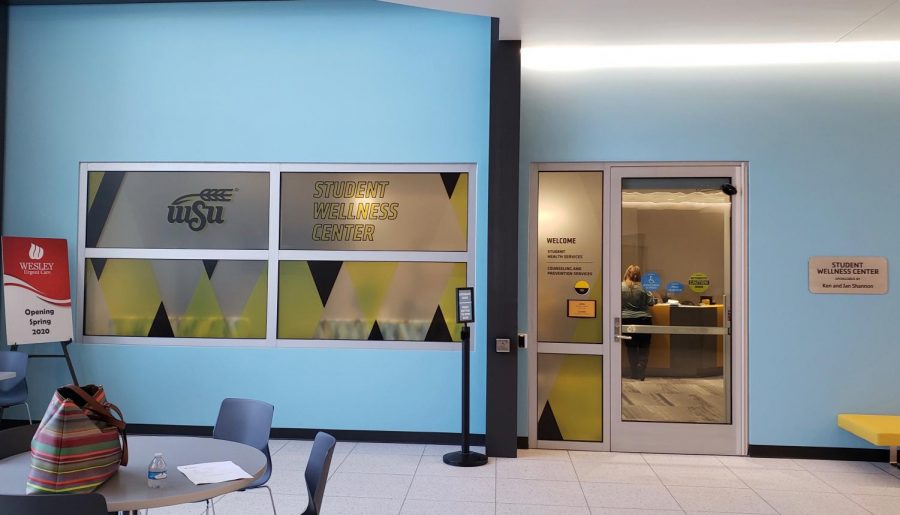Student Health Services taking steps to be a COVID-19 vaccine distribution site
The outside of the Student Wellness Center, which houses Student Health Services. (File photo)
Wichita State’s Student Health Services has taken active steps to be a COVID-19 vaccine distribution sight in the near future, Director Camille Childers said. The center has applied and is waiting to hear back from the local health department.
“While there are a lot of clinics that are approved to be providers, it’s up to [Sedgwick] county right now, to decide who actually gets the vaccine and when,” Childers said.
The state is currently in phase 2 of the vaccination distribution process and it is unclear when the vaccine will be available to the general public.
The COVID-19 vaccination includes two rounds of doses, and according to the CDC, once someone is vaccinated they have ninety days of presumed immunity. This means that if they are exposed to COVID-19 in that time frame, they will not need to quarantine as long as you stay asymptomatic.
“If I start having symptoms, then I should seek a medical provider’s opinion to see if I have developed COVID-19,” Childers said. “Sometimes what vaccines do is it lessens the risk of you catching the disease and if you do catch it, it’s a much milder case than if you hadn’t gotten vaccinated.”
After getting the vaccine, Childers says that social distancing, hand washing, and wearing a mask are all still things that you should be doing.
“When it comes to COVID-19, this is a novel virus, which means we’ve only been working on this virus for a little over a year. They’ve been working on similar type viruses and vaccinations for years, and that’s why they were able to get out this vaccine so quickly.
“The reality is we are not 100% sure you will be protected from COVID-19, if you’ll need a booster in a year, we just don’t know that yet. We hope so,” Childers said.
When getting the vaccine, Childers said it is normal to experience soreness in your arm, a low grade fever, or feeling sluggish for a day or two. This is because the immune system is having an immune response and is building up antibodies.
Side effects include significant swelling, redness or pain at the injection site, which could mean a local or significant local reaction. Other symptoms to watch out for are long term fever, and any significant symptoms such as chest pain and difficulty breathing.
“When you get the vaccine you are required to sit in the vaccination area for anywhere from 15-30 minutes,” Childers said. “A true anaphylaxis life-threatening emergency after a vaccination usually will occur in the first 15 minutes … Those types of life-threatening emergencies typically happen shortly after the injection is given.”
Even if a person has had COVID-19 in the past, Childers said that they should still take the vaccine after completing their isolation period and if they are asymptomatic.
Currently, the vaccination is only recommended to people 16 and over. For pregnant women, they are encouraged to speak to their OB-GYN. If someone has had an allergic or anaphylaxis reaction to a vaccine before, Childers said they should check with their primary care provider before choosing to vaccinate.
“We will know more in six to seven months as the vaccine rollout continues or we see what is happening in other countries,” Childers said. “I mean, it’s not just the U.S that’s looking at this, it’s the whole world.”

Julia Nightengale was a third-year reporter for The Sunflower, previously working as a Copy Editor and News Editor. Nightengale is a graduate student working...









